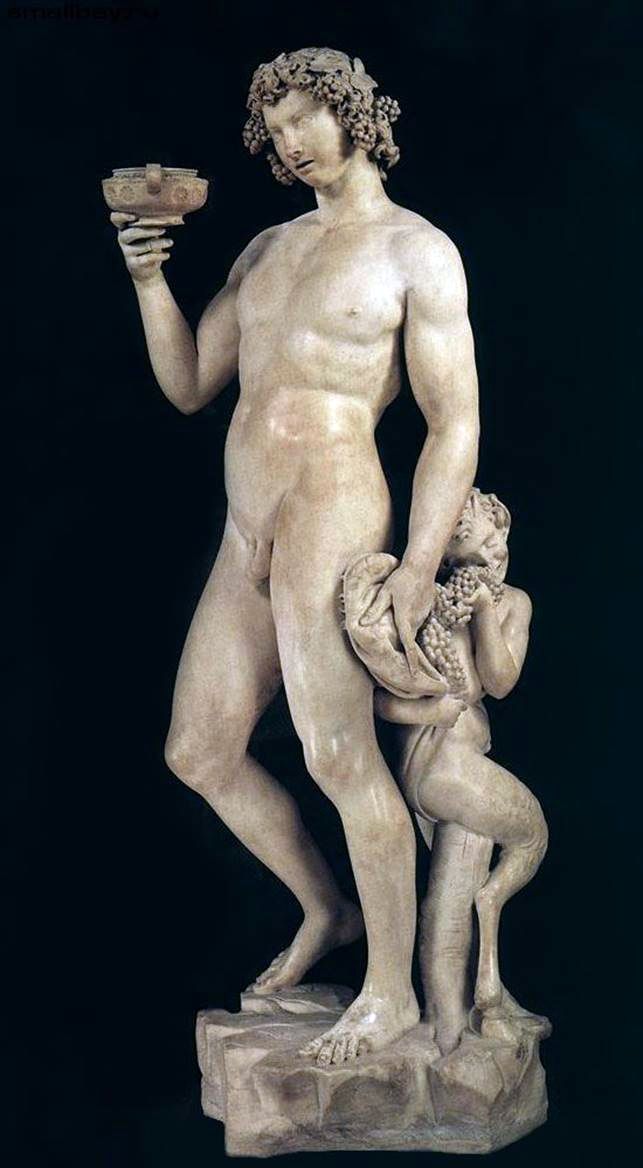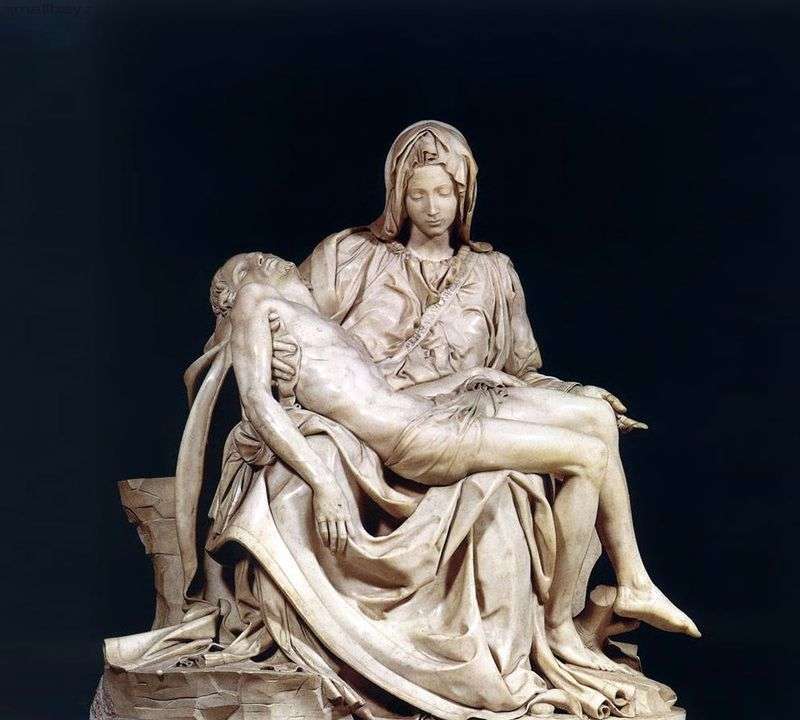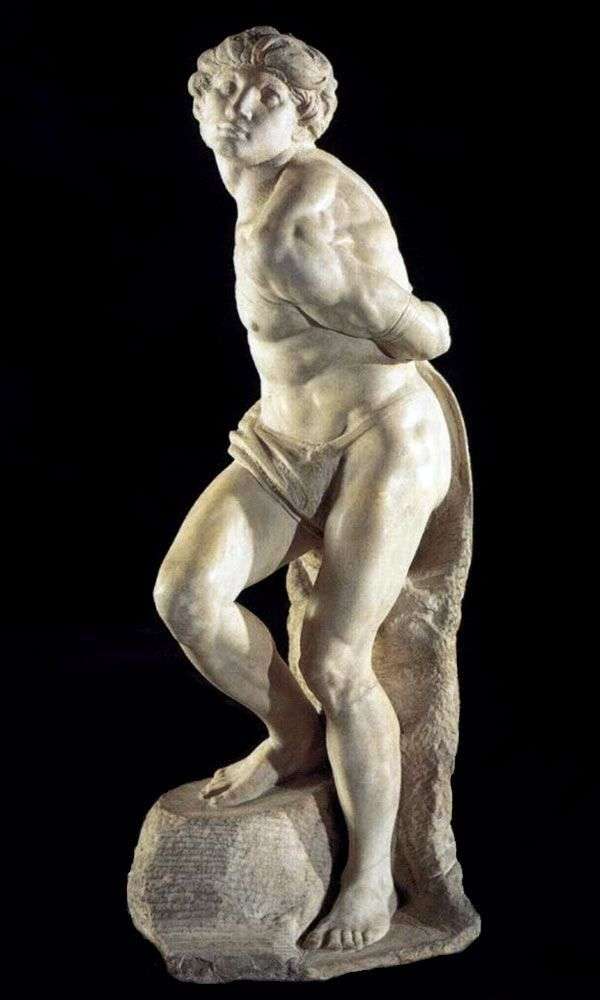
Sculpture by Michelangelo Buonarroti “Bacchus” or “Bacchus”. The height of the sculpture is 203 cm, marble. The first sculptural works by Michelangelo that have come down to us – the reliefs “Madonna on the Ladder” and “The Battle of the Centaurs” created in the early 90s of the 15th century, like Raphael’s first paintings, are already works of art of the High Renaissance.
In a small relief “Madonna by the Stairs” from the Quatroentist sculpture, the technique of low relief, subtly nuanced from the plastic point of view, is still preserved. But in contrast to the masters of the 15th century, who usually brought a tint of genre to the image of the Madonna and Child, emphasizing the charm of the young mother, the playfulness of the child, Michelangelo creates the majestic image of the Madonna, full of restrained inner power; he boldly endows the infant with an almost athletic build.
Already this work is characterized by a heroic spirit that distinguishes the images of Michelangelo. In the years 1495-1496, Michelangelo traveled to Bologna, where he studied the works of Jacopo della Querca, which turned out to be particularly close to the heroic warehouse of his images. In 1496, Michelangelo leaves for Rome, where he remains until 1501. In Rome, by this time many famous ancient sculptures had already been discovered, including the Laocoon and the Belvedere Torso.
The artist was captured by images of ancient art, Michelangelo paid tribute to them in his “Bacchus” – the work, however, is not yet deep and does not have genuine originality. The drunken god of wine is accompanied by a little satyr who regales a bunch of grapes. Bacchus seems ready to fall forward, but maintains balance, leaning back; his gaze is on the wine cup.
The muscles of the back look elastic, but the relaxed muscles of the abdomen and thighs exhibit physical and therefore spiritual weakness. The sculptor achieved a solution to a difficult task: to create the impression of instability without compositional imbalance, which could disrupt the aesthetic effect.
 Bacchus (sculpture) – Michelangelo Buonarroti
Bacchus (sculpture) – Michelangelo Buonarroti Madonna and Child (sculpture) by Michelangelo Buonarroti
Madonna and Child (sculpture) by Michelangelo Buonarroti Pieta (sculpture) by Michelangelo Buonarroti
Pieta (sculpture) by Michelangelo Buonarroti Bound Slave (Sculpture) by Michelangelo Buonarroti
Bound Slave (Sculpture) by Michelangelo Buonarroti Morning (sculpture) by Michelangelo Buonarroti
Morning (sculpture) by Michelangelo Buonarroti Moses (sculpture) by Michelangelo Buonarroti
Moses (sculpture) by Michelangelo Buonarroti Victory (sculpture) by Michelangelo Buonarroti
Victory (sculpture) by Michelangelo Buonarroti Evening (sculpture) by Michelangelo Buonarroti
Evening (sculpture) by Michelangelo Buonarroti